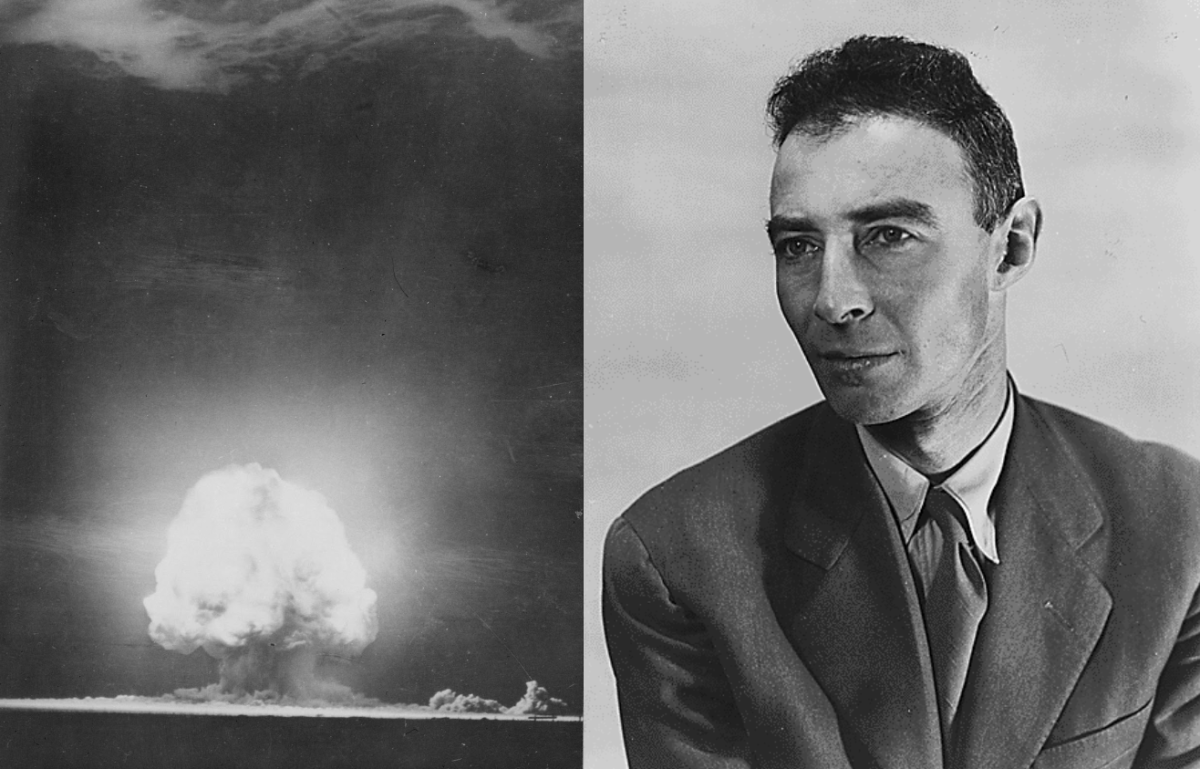I arrived at the AMC Metreon theater at 10:57 am, three minutes before the IMAX 70mm screening of Christopher Nolan’s film Oppenheimer, opening day. I jumped out of my Uber and hurried upstairs into the dizzying line. More than a thousand people gathered around the entrance, some wearing formal clothes, others dressed up in bright hot pink shades for Barbie.
The longer I stood in the line, the more I contemplated the number of people waiting to see a seemingly niche movie since Universal advertised its strict usage of practical effects to passionate cinephiles. However, Oppenheimer had skyrocketed in popularity; the internet launched the cultural phenomenon “Barbenheimer,” based on the simultaneous theatrical releases of Oppenheimer and Barbie. The fact that these two stylistically unique films debuted on the same day seemed so surreal that people embraced it. This craze began after the feud between Nolan and his former movie studio, Warner Bros., who likely distributed their movie Barbie on the same day to steal box office numbers. Still, people flocked to theaters, and both performed exceptionally well, collectively earning more than 2 billion dollars internationally.
Based on the biography American Prometheus: The Triumph and Tragedy of J. Robert Oppenheimer by Kai Bird and Martin J. Sherwin, Nolan’s film depicts the internal struggles of the famous yet enigmatic physicist, who created worldly consequences from his omitted words and actions. The film splits into two parts, one in color (“Fission”) and one in black-and-white (“Fusion”). “Fission” chronicles Oppenheimer’s studies in Cambridge and Germany, his gradual journey to the Manhattan Project with Leslie Groves (Matt Damon), and the security hearings during the Cold War that led to his downfall. The second plotline follows the story of Lewis Strauss (played by Robert Downey Jr.), the U.S. Atomic Energy Commission Chair who vies to be Secretary of Commerce as he tries to hide his tumultuous business relationship with Oppenheimer. The story waltzes between these two plotlines periodically, bonding the story of these two men as both deal with tragedy stemming from the Manhattan Project and its catastrophic change in history.
In Oppenheimer, Christopher Nolan paints a vivid picture of the scientist’s lonely inner psyche, heavily shown using vivid color, magical realism, dream sequences, and bombastic visions of chaotic subatomic particles. The soundtrack by Ludwig Göransson, known for his work with Childish Gambino, shines in every millisecond of screen time. As dense and loud as Nolan’s movies can be (this is no exception), Göransson’s score does not overstay its welcome. Nolan emphasizes the corruption inside the government and how it contributes to national distrust, fear, and inhumane loss of life reflective of the bombings of Hiroshima and Nagasaki or even recent disasters. “It’s not a movie,” Chamy Choi ‘24 declares, “but an experience.”
It is incredible to see a film of this magnitude, with its heavy surrealism and deep themes, become a summer blockbuster, a title usually given to action and superhero films. Many people left the theater feeling empty, demonstrating how people deeply resonated with the story’s messages. Theaters serve as a collective outlet to understand and alleviate fears of modern life, an experience one can’t replicate on a TV. During a tumultuous time in the film industry, as the WGA and SAG-AFTRA strike while struggling to obtain a living wage due to AI threatening screenwriting and a lack of compensation from streaming, Oppenheimer reflects a universal story about the fight against bureaucracy, which uses people’s creativity to their cruel advantage. It also serves as a testament to our modern claustrophobic environment and societal progression that leaves people anxious and alone. “Oppenheimer is the man of our times,” Conor Hansbury ‘24 says. “He is the symbol of an era long gone, yet ever present.” With a chance of population annihilation at the control of powerful officials’ fingertips, the atomic bomb has affected the world in unimaginable ways. However, bonding with others who feel this fear and pain creates solutions and understanding. Experiencing Oppenheimer, we witness and grapple with an ordinary man full of creativity and passion, undergoing the tragedy and devastation of giving humans the power to destroy themselves more than they already have.















soph • Oct 11, 2023 at 6:57 pm
well done Floyd, I really like your interpretation of the film and the lens through which you interpret the zeitgeist of the film!